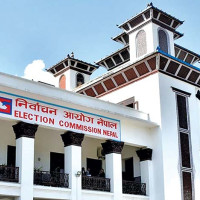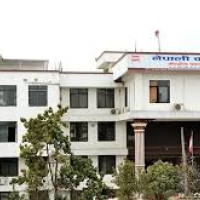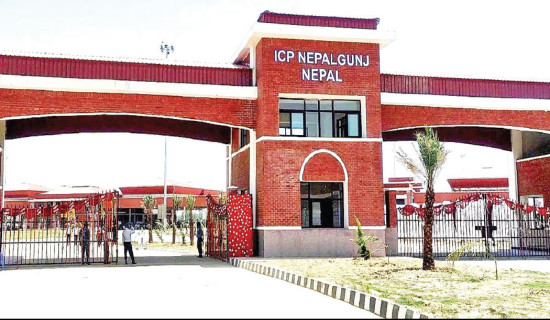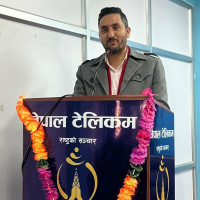- Sunday, 28 December 2025
Health institutions lack required doctors and nurses
Kathmandu, Apr. 14: Nepal has seen several developments in the health sector over the centuries. From relying predominantly on traditional treatment until 935 B.S. (879 A.D.), the majority of the population currently relies on modern medicine.
Primary healthcare centres (PHCs), health posts (HPs) and hospitals have been established throughout the country to provide medical services in an accessible and affordable manner.
According to the Nepal Health Fact Sheets 2023, until Fiscal Year 2022/23, there were 187 PHCs, 3,778 HPs and 215 public hospitals across the country.
Similarly, there were 246 basic hospitals with a capacity of 5 to 15 beds, 333 general hospitals with 25 to 50 beds, 79 hospitals with 100 to 300 beds, 28 specialised hospitals (100+ beds), 22 super speciality hospitals (50+ beds) and 29 academy and teaching hospitals (300+ beds) in the country.
Moreover, the number of basic hospitals (5 to 15 beds) is currently on the rise after the government, in 2020, started constructing a basic hospital at every local level.
However, despite the health facilities constructed in a good number to cover every corner of the country, the buildings lack enough manpower and infrastructure for effective service delivery.
District hospitals
After PHCs and HPs, a district hospital has been a major hub for patients with medium and poor economic conditions for decades. There is a district-level hospital in all 77 districts of the country; but the majority of them do not have enough infrastructure, resources and manpower to offer quality services.
Consequently, the district hospitals have not been developed and upgraded as per the need of time.
“Most of the district hospitals still have a capacity of only 15 to 20 beds. While some of the district hospitals have specialised doctors as well, many struggle for a medical officer alone,” said Dr. Prakash Budhathoky, spokesperson for the Ministry of Health and Population. According to Dr. Budhathoky, the federal ministry’s activeness in basic and general hospitals has declined after the responsibility of local and provincial governments increased. “But there is a lack of coordination between the three tiers of the government in managing human resources,” he added.
As per the Koshi Province Health Directorate, there are slots for 67 chief consultants in the 14 district hospitals of the province, but shockingly 64 of them are empty. While Jhapa District Hospital is the only one with fulfilled positions, Udayapur’s is completely vacant.
While Jhapa District Hospital has its posts filled, the available number of health personnel is not sufficient to look after hundreds of patients flocking to the hospital daily.
Likewise, of the 85 government-sanctioned posts for specialised doctors and medical officers at the district hospitals of Palpa, Bardiya, Gulmi, Rukum East, Nawalparasi West and Kapilvastu in Lumbini Province, only 22 have been filled.
The scenario is dire in Karnali Province. According to the Social Development Ministry of Karnali, there are only 12 permanent doctors in eight district hospitals of Surkhet, Dailekh, Jajarkot, Salyan, Rukum West, Kalikot, Mugu and Dolpa. Meanwhile, there is no permanent doctor in Humla District Hospital.
Provincial and tertiary hospitals
There is more than one provincial-level hospital in multiple provinces. They are well-equipped and larger than district hospitals. However, provincial hospitals also face a deficit of doctors alongside other health professionals (nurses and technicians).
Mahakali Provincial Hospital in Sudur Pashchim Province has 16 sanctioned posts for doctors but only one is fulfilled.
In Madhes, the province with the highest number of provincial hospitals, Lahan Provincial Hospital and Jaleshwor Provincial Hospital have filled the sanctioned posts for doctors; however, they have only three sanctioned posts (1 specialised doctor and 2 medical officers) each.
On the other hand, Janakpurdham Provincial Hospital has posts for 45 specialised doctors and 11 medical officers. While there are 11 medical officers employed under the sanctioned posts, there are only 22 specialised doctors.
The scenario is similar in the context of nurses as well. For instance, Seti Provincial Hospital in Sudur Pashchim has 20 sanctioned posts for nurses of which 17 nurses have been appointed. As 20 nurses are far from enough to cater to the patients in the provincial hospital, 150 nurses have been employed under contract basis.
Nevertheless, since the country’s oldest and biggest health centre, Bir Hospital, also has a shortage of manpower, the prevalence of such problems in other government health centres is not something surprising.
While tertiary hospitals (300+ beds) have more doctors and nurses than other hospitals, they too have failed to increase the number of health professionals with the rise in the number of patients.
The recent shutdown of health services (except emergency ones) in the Dharan-based BPKIHS after the doctors and employees went on strike brought to fore another prevailing problem in the health sector: regular and ethical promotion of employees alongside transparency in recruitment.
Shortage in data
According to the Nepal Health Fact Sheets 2023, the bed occupancy rate in hospitals has been increasing annually. From 35 per cent in 2020/21, the bed occupancy rate rose to 47 per cent in 2021/22 and reached 51 per cent in 2022/23.
The average length of stay for a patient at a hospital has also increased. While the average length of stay was 3 in 2020/21, it has risen to 3.6 in 2022/23.
While the data shows a rise in the number of sick patients annually, the inability to increase the number of health workers and upgrade health institutions’ physical infrastructure and resources will be a great problem in the future, doctors warned.
As per the 2022/23 Annual Report of the Department of Health Services (DoHS), there are 9.04 doctors, 21.08 nurses, 20.67 AHWs, 11.81 ANMs, 10.27 laboratory personnel, and 5.97 health assistants per 10,000 population.
Based on skilled health worker densities in countries with a median observed achievement on an index composed of 12 indicators of the UN Sustainable Development Goals (SDGs), the World Health Organisation (WHO) states 44·5 physicians, nurses, and midwives per 10,000 population as a new minimum density threshold.
Meanwhile, as per the annual report of the DoHS, there were 73 per cent of posts filled against sanctioned positions with no fulfilment of consultant or physician/general practitioner positions in Karnali Province, the remotest region of the country.
Laws are making it mandatory for students who completed their studies under government scholarships through the Medical Education Commission (MEC) to work in a remote region for two years; however, doctors have been avoiding remote regions due to a lack of strictness from the authorities.
Nevertheless, thanks to the government scholarship programme in medical courses alongside grants and support from different organisations that a good number of health personnel are working on a contract/temporary basis throughout the country.
Way forward
According to the DoHS annual report, as of FY 2022/23, a total of 30,027 medical doctors, 4,883 dental doctors, 1,100 Ayurveda doctors, 78,948 registered nurses, 37,346 ANMs, 66 registered midwives, 1,507 specialized nurses, 6,093 pharmacists have been registered in their respective councils.
Similarly, the number of health professionals has been increasing annually as the country itself has enough medical and nursing colleges alongside federal-level health academies.
According to the authorities, 9,000 medical doctors and nurses (including specialised and super-specialised courses) have been produced from seven federal-level health academies – NAMS, BPKIHS, KAHS, PAHS, PoAHS, RAHS and NAIHS – alone.
“As per a recent study and estimation, Nepal needs 93,000 health workers, including doctors, nurses and technicians. However, we only have around 25,000 sanctioned posts,” said Dr. Budhathoki, adding, “We need more manpower, at least 30,000-35,000 more than the existing numbers. But when we seek support from the Finance Ministry, we are denied outright.”
The provincial governments also expressed the desire to conduct examinations and hire more health workers but shared the problem of budget crunch.
Health experts also highlighted the need for local and provincial governments to focus more on health and prioritising the sector in budgets, plans, policies and programmes.
“We have a sufficient number of health manpower produced within the country. We only need to manage them. It is because of the lack of secure jobs that health professionals are flying abroad in pursuit of better careers,” said Dr. Budhathoky.
Moreover, with the rise in attraction towards the government’s health insurance scheme, the government, especially the local, has been suggested to improve services in PHCs and HPs alongside the under-construction 5/10/15-bed hospitals.
(With inputs from Hari Koirala of Koshi, Prakash Shah of Sudur Pashchim, Rajani Yogi of Karnali and Bhuwan Karki of Lumbini.)
















